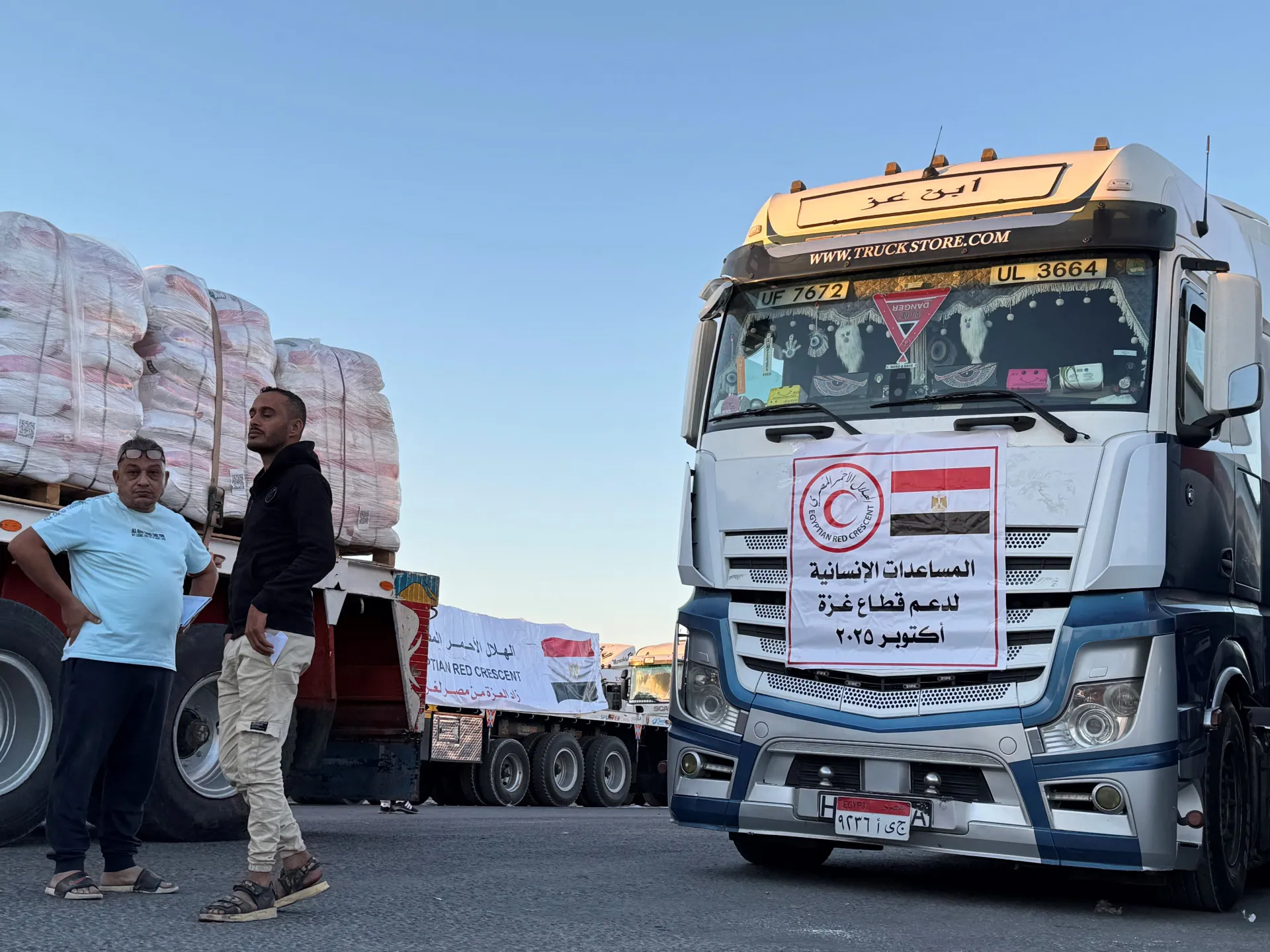Hamas has denied accusations by the US Central Command (CENTCOM) that the Palestinian group looted aid trucks in the Gaza Strip.
CENTCOM had published drone footage that allegedly showed an aid truck being looted in the enclave. It said in a statement that the drone observed suspected Hamas operatives looting the truck that was travelling as part of a humanitarian convoy in northern Khan Younis on October 31.
Recommended Stories
list of 4 itemsend of list
On Sunday, Hamas called the United States’ accusations “unfounded” and “part of an attempt to justify the further reduction of already limited humanitarian aid, while covering up the international community’s failure to end the blockade and starvation imposed on civilians in Gaza”.
“All manifestations of chaos and looting ended immediately after the withdrawal of the [Israeli] occupying forces, proving that the occupation was the only party that sponsored these gangs and orchestrated the chaos,” it added.
Hamas said more than 1,000 Palestinian police and security forces had lost their lives and hundreds were wounded while trying to provide protection for humanitarian aid convoys and ensure that assistance reaches those in need.
It affirmed that none of the international or local institutions, nor any driver working with the aid convoys, has filed any report or complaint about looting by Hamas.
“This clearly demonstrates that the scene cited by the US Central Command is fabricated and politically motivated to justify blockade policies and the reduction of humanitarian aid,” it said, blaming the US for failing to document the ongoing Israeli attacks following the ceasefire agreement that killed 254 Palestinians and wounded 595.
CENTCOM said that the MQ-9 aerial drone was flying overhead to monitor the implementation of the ceasefire between Hamas and Israel.
“Over the past week, international partners have delivered more than 600 trucks of commercial goods and aid into Gaza daily. This incident undermines these efforts,” it said in the statement.
Hamas said the average number of aid trucks entering Gaza daily does not exceed 135, while the rest are commercial trucks bearing goods that Gaza’s population cannot afford “despite our repeated calls to increase the number of humanitarian aid trucks and reduce commercial shipments”.
“The US adoption of the Israeli narrative only deepens Washington’s immoral bias and places it squarely as a partner in the blockade and the suffering of the Palestinian people,” it said.
The ceasefire took effect on October 10 under US President Donald Trump’s 20-point plan.
Phase one of the deal includes the release of the captives in exchange for nearly 2,000 Palestinian prisoners. The plan also envisages the rebuilding of Gaza and the establishment of a new governing mechanism without Hamas.
Since October 2023, Israel’s war on Gaza has killed more than 68,500 people and wounded over 170,600 across Gaza.

